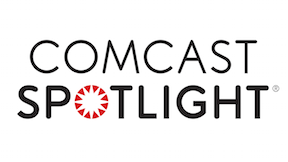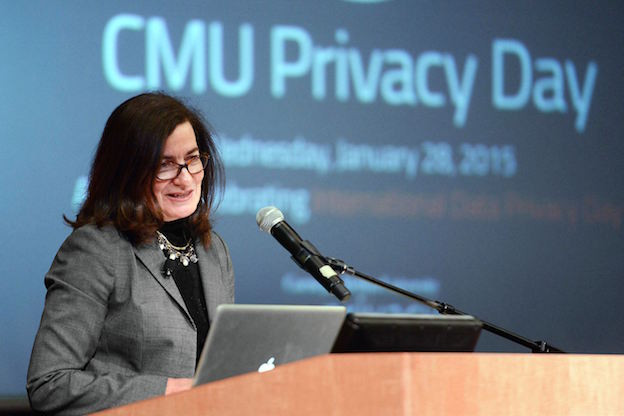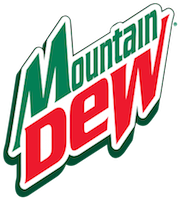
Publishings
Program Areas
-
The Verizon Digital Media Services platform — and the products built upon it — support three primary solutions: our Web Acceleration (link is external), Commerce Acceleration (link is external) and Video Lifecycle (link is external). Each solution is purpose-built to transform your content into world-class experiences. Albert Cheng, EVP and Chief Product Officer, Digital Media Albert Cheng talks about the evolving TV landscape and how Disney/ABC plans to deliver video in this new world of TV Everywhere. Using Verizon Digital Media Services’ next-generation platform and solutions, Disney/ABC will be better prepared for the new consumer reality when it comes to content consumption. The Challenge Traditional TV viewing is evolving as more viewers are choosing to access more media on a multitude of devices. Millennials are cutting the cord and ending their cable subscriptions. They want to watch TV anytime, anywhere. Broadcasters like Disney/ABC have had to develop new methods and adjust their workflows to bring content closer to their viewers. But they can’t do it alone. Traditionally, broadcasters have had to rely on a mix of vendors and technologies to deliver optimal content to the countless number of devices, platforms, screen sizes and software updates available. There’s also video encoding, ad insertion, asset management, internet delivery and skyrocketing costs to consider. Having just one partner who could help simplify content preparation and accelerate online delivery would make online distribution much easier while reducing costs. Verizon Benefits Thanks to Verizon’s evolved platform and Video Lifecycle Solution, broadcasters like Disney/ABC only have to deal with one partner to prepare, deliver and display their content online. Verizon’s encoding technology uses just one format to deliver the perfect TV-like viewing experience to every device and every screen. Closed captioning is inserted seamlessly into one workflow, and live content can be made available for on-demand playback immediately. Even local affiliate stations can stream relevant, local ads instantly, with great sound and picture quality. Verizon makes it easier for broadcasters to stay focused on content, while we take care of delivering the perfect experience. --- For more information visit, http://bit.ly/1SESYcf (link is external) and http://bit.ly/1Wi0sHJ (link is external)
-
Blog
Rovi and Charter Sign Multi-Year License Renewal
Leading Cable Service Provider Extends Agreement for Rovi's IP Portfolio and IPGs
Santa Clara, Calif., April 20, 2015 — Rovi Corporation (NASDAQ: ROVI) today announced that Rovi has renewed its patent license and interactive program guide (IPG) product agreement with Charter Communications, Inc. The license renewal extends Charter’s IPG patent license. Under the terms of the agreement, Charter will also be able to license Rovi’s products and services, including Rovi Search, Recommendations and Conversation Services, Rovi Metadata and Rovi Analytics. “As the media and entertainment marketplace becomes increasingly fragmented, Rovi is helping customers like Charter raise the bar by delivering innovative discovery experiences that increase entertainment content consumption,” said Tom Carson, chief executive officer, Rovi. “Our license renewal with Charter reinforces the value of Rovi’s patent and product portfolio in Pay-TV homes across the nation. Rovi is pleased to have reached this significant license agreement with Charter and we look forward to continuing to work together as our respective businesses evolve.” Rovi Search and Recommendations Services are built upon a predictive process that analyzes past viewing behaviors and preferences. Rovi uniquely combines entertainment metadata with a dynamic Knowledge Graph that maintains semantic, real-time information on more than 100 million entertainment-related entities. Rovi Conversation Services create intuitive ways for consumers to discover and access huge libraries of programming, bringing a next-generation user experience to television and video applications with naturally spoken language. Rovi Analytics provides data-driven insights and business intelligence to advance operational efficiency, improve customer experience and support business decisions to help mitigate churn. --- Full article available at http://bit.ly/1ROhho5 (link is external) -
Today’s consumers live in digital homes, using Comcast’s technology to watch video on more screens all around the house—and on the go. Comcast Spotlight’s multi-screen advertising solutions combine the strengths of each screen customers use. Our expertise in reaching fragmented audiences lets us create custom campaigns with broader reach, more impressions and deeper engagement. Television Advertising With more than 50 networks appealing to distinct demographic, psychographic and geographic audiences, cable television is unmatched in its ability to offer both broad and targeted reach. On-demand advertising extends television campaigns and engages viewers by showcasing additional video about advertisers’ products and services. Digital Advertising Through high-visibility placements on popular websites like XFINITY.com, marketers can align their advertising by bringing their TV commercials online, enhancing them with interactive features and links for unsurpassed effectiveness and efficiency. Features • Leverages growing consumer “media multitasking” behavior: using multiple devices simultaneously. • Advertising can be segmented by demographic, psychographic and geographic criteria, across full markets or at the neighborhood level. Benefits • Maximizes reach by targeting audiences using multiple devices for unduplicated local reach. • Allows for deeper engagement with advertisers’ target audiences. --- See Comcast media kit, attached.
-
Comcast’s NBCUniversal is launching a new division, Audience Studio, designed to allow marketers to target audiences across TV, digital and social media marketing channels, the Wall Street Journal (link is external) reported. The key component of Audience Studio is a data management platform that marketers can use to combine their first-party data with NBCU data and third-party data. Denise Colella, senior vice president of data platforms and strategy for NBCU, will lead the new division, according to the Journal. Dive Insight: Audience Studio is combining four relatively new NBCU ad products that reach different marketing channels: Audience Targeting Platform for TV, NBCUx for digital, NBCU+ Powered by Comcast for set-top boxes, and Social Sync for social media. By combining these products, the new division simplifies advertising across all channels using the same targeting data. Previously marketers had to manually navigate each product to execute a multi-channel campaign. Krishan Bhatia, executive vice president of business operations and strategy at NBCU, told the Wall Street Journal, “If before you had this Chinese Wall between groups, with this, you are permeating that. Going forward, a brand can now align their data inputs and outputs.” Although Audience Studio should help marketers looking to reach NBCU’s diverse audience, the division does play into industry fears that the large media corporations are beginning to create “walled gardens (link is external)” of data and tools – not unlike the current state of affairs with Google and Facebook on the digital side. --- Visit http://bit.ly/1oxsUIO (link is external) for more information.
-
Blog
Today’s FCC Action Will Force Open the “Black Box” of ISP Data Gathering Practices that Threaten Consumer Privacy
Vote Shows lack of understanding on limited role of FTC
Phone and cable ISPs pose a major threat to the privacy of their subscribers and consumers. They have a growing arsenal of “Big Data” capabilities that eavesdrop on their customers—including families. Internet Service Providers are gathering data on what we do and where we go, using sophisticated algorithms and predictive analytics to sell our information to marketers. As CDD documented in a report released last week, ISPs have been on a data buying and partnering shopping spree so they can build in-depth digital profiles of their customers (such as Verizon (link is external)/AOL/Millennial Media and Comcast/ (link is external)Visible World). Consumers should have the right to make decisions on how their information can be collected, shared or sold. With a set of FCC safeguards, Americans will have some of their privacy restored. We look forward placing on the record all the ways those ISPs now—and will—threaten the privacy of Americans. Several commissioners appear uninformed about the ability of the FTC to protect consumer privacy. The FTC does not have the regulatory authority to ensure privacy of Americans is protected (except in rare cases, such as the Children’s privacy law we helped develop). The FTC’s framework has failed to do anything to check the massive collection of our data that everyone online confronts. It’s the role of the FCC to ensure that broadband networks operate in the public interest, including protecting consumers. Today’s vote reaffirms that the FCC takes its mission to do so seriously. -
The average TV viewer in the U.S. watches more than four hours of programming daily. And marketers spend $71 billion each year to reach them. The consumer has 100 times more places and ways to access their favorite TV content than just 10 years ago. With so much money on the line and massive viewer fragmentation, it only makes sense that advertisers are seeking ways to combine the data-driven targeting, automation and accountability of digital with the reach and influence of TV. They want to be able to reach their most highly-qualified customers with the most relevant, personalized ads possible. Fortunately, thanks to addressable television, the advertising industry has a means to deliver on that promise. However, despite the landscape shifting in its favor, growth in addressable TV advertising spend has been slower than anyone expected. The industry still faces technology challenges, with millions of outdated set-top-boxes that aren’t compatible with addressable TV technology; it’s expensive for the operators to deploy addressable TV ad delivery systems and pay for the measurement data necessary to support the business. Also, the buying and selling tactics for addressable TV ads have been very manual, although that’s beginning to change with some addressable TV ad impressions now available to be purchased programmatically. Finally, the TV industry still lacks the standardization for measurement and analytics marketers require for addressability to grow as fast as it should. But, as an industry, we’ve reached a tipping point with addressable TV. Adoption is only becoming a necessity. Here’s why 2016 is poised to be the year addressable finally breaks through, despite the obstacles. Finally, the infrastructure for addressability is in place. For years, industry players talked about moving beyond basic age and gender demographics as being critical to the future of television, but the time wasn’t quite right for it. MVPDs have been working hard to build out the technology infrastructure to insert addressable ads at scale, activate first- and third-party data sets for precision targeting and deliver the invaluable campaign attribution and ROI data marketers so desperately want for their TV ad investments. A study by the IAB (link is external) found nearly 80 percent of advertisers now use “advanced TV,” which includes programmatic and addressable TV, and 70 percent of advertisers plan to spend more on the medium in the coming year. The same research found addressable advertising is increasing the most, with advertisers citing strong benefits like better targeting capabilities and the ability to personalize or localize messages. The pieces that were missing from the equation are finally in place, and adoption has reached a critical mass, making it the right time for addressability to take off. The election is driving us toward addressability. This couldn’t be more clearly demonstrated than in political campaigns. We’re in the throes of another big election season, and this time, the tide is shifting away from traditional media campaigns toward a more data-driven and targeted advertising approach. --- See more at http://bit.ly/1MBoH1f (link is external)
-
Blog
Commerce Department Continues to Show Disregard for Consumer Privacy by “convening” industry dominated group on facial recognition without participation of consumer and privacy civil society groups
Lobbyists craft purposefully vague proposals without any real safeguards for biometric data
Americans face new privacy threats from the use of their facial and other biometric information, as personal details of our physical selves are captured, analyzed and used for commercial purposes. Facial recognition (link is external)technologies are part of the ever-growing (link is external)data collection and profiling (link is external) being conduced daily on Americans today—whether we are online and offline. Companies want to be able to use the power (link is external) of facial recognition to make (link is external) decisions about us—including how we are to be treated in stores and on websites. Consumer groups have called on industry to support pro-consumer and pro-rights policies that would ensure an individual can decide whether facial and other personal physical information can be collected in the first place. Last June, however, the industry dominated process led by the Department of Commerce refused to support respecting a persons’ right to control how their biometric data can be gathered and used. As a result, consumer and privacy groups withdrew (link is external) from the Commerce Department “stakeholder” convening on facial recognition. These meetings—primarily dominated by industry lobbyists—are part of a White House initiated effort to design “codes of conduct” to ensure American’s have greater privacy rights. But instead of trying to address the concerns of the consumer and privacy community about meaningful safeguards for facial recognition when used for commercial purposes, the Commerce Department merely continued the process without their participation. For the Commerce Department, its priority is to help grow the consumer data profiling industry—regardless of whether Americans face a serious threat to their privacy and the consequences of potential discriminatory and unfair practices. Today, the Commerce Department is considering industry proposals (link is external) on facial recognition that fail to ensure the American public is protected by the growing use of facial data collection for commercial use. The drafts allow unlimited use of our most personal data without effective safeguards. Instead of ensuring basic rights—such as giving people the right to make informed decisions prior to the collection of their facial data—the industry proposes a scheme that would allow it to harvest our faces, skin color, age, race/ethnicity and more without any limit. By allowing such a clearly inadequate and self-serving industry proposal to be considered at all, the Department of Commerce (and its NTIA division) demonstrates it cannot be trusted to protect consumers. It is putting the commercial interests of the data industry ahead of its responsibilities to the American public. The process and the proposals are not reflective of America today. We cannot believe that President Obama (link is external) endorses how his Commerce Department has transformed the idea of a “Consumer Privacy Bill of Rights” into one that really gives carte blanche to the unfettered use of our faces and other highly personal biometric information. -
Blog
Time Warner Cable is more than television, Internet, and telephone
Service provider uses Adobe Marketing Cloud to better acquire, develop, retain, and serve customers with optimized digital experiences.
Time Warner Cable’s residential business is comprised of 14.5 million customers who make more than 17 million monthly visits to each of the company’s websites. Given the company’s size and scale, gaining insights into customer segments is a monumental task, while understanding individual customer behaviors and preferences added even greater challenges. However, that is exactly the approach the company wanted to take to create more personal customer experiences in order to acquire, grow, and retain customers. “Building successful customer relationships is vital to our business,” says Rob Roy, head of eCommerce & Digital Marketing at Time Warner Cable. “We needed to create the best first impression possible for the broadest audience, as well as create personalized experiences so customers understand exactly how important they are.” To support its overarching digital strategies and focus on connecting one to one with customers, Time Warner Cable wanted to gain deeper visibility into customer behaviors and preferences, as well as make those insights actionable. By understanding what each customer was looking for and then automating content and offer delivery, digital teams could enrich experiences and sales delivery to boost customer engagement and revenues. At the highest level, the company wanted to identify new and existing customers arriving on the site to deliver content focused on account login, personalized upgrade offers, or general product information. “By identifying customers on the landing page and delivering optimized experiences, we set a much better impression and more positive tone for customer conversations,” says Jeff Henshaw, director of Web Analytics and Business Intelligence at Time Warner Cable. “It also eliminates redundant conversations and enables us to keep relationships with customers moving forward.” Foundation for omnichannel personalization With an eye on delivering dynamic digital experiences, Time Warner Cable chose to retire its disparate digital marketing technologies and implement an extensible, end-to-end digital marketing platform built on Adobe Marketing Cloud. Prior to using Adobe Marketing Cloud, the company had a set of disparate analytics, targeting, and audience management systems in place. However, challenges with integrating and maintaining the various third-party technologies, maintaining interoperability when new version releases came out, and keeping staff proficient on multiple systems limited the value the company was able to extract. By implementing Adobe solutions, the company upgraded to best-in-class technology in each functional area and improved overall marketing and business performance by moving to a single, unified platform with Adobe Marketing Cloud. As a result, the company saw a significant opportunity to have its marketing initiatives meet the maturity of its business. To achieve the company’s vision, Time Warner Cable had to do three things. First, it had to create a unified customer profile taking into account all known first-party data including visitor and customer CRM database information, as well as second- and third-party data from partner and paid data providers. Secondly, the company’s need to integrate a unified profile with web and display media channel technology in order to deliver personalized content. And finally, its need to establish a strategy and process to test and target personalized content. A disciplined approach The first step was to integrate visitor data with CRM database information and second- and third-party provided consumer data. To do this, Time Warner Cable utilized Adobe Audience Manager. By integrating visitor data captured in Adobe Analytics with the company’s CRM database along with second- and third-party provided consumer data, Time Warner Cable had a complete view of its current customers as well as prospective customers for the first time. For example, the company can create a segment of current customers who have Internet-only service in the Northeast and are due for a subscription renewal. The output of this step was a unified customer profile with nearly 300 active segments of customers from which Time Warner Cable could target content and offers. The second step was to integrate this profile information with downstream systems, including display media technology, to personalize display media content with Adobe Experience Manager and Adobe Target. In turn, the company could push personalized content to hundreds of customer segments across the website based on profile attributes, such as navigation and indicated interest. “Adobe Marketing Cloud has accelerated our testing and measurement capabilities,” says Henshaw. “It enables us to interpret customer engagement within different side-by-side experiences and, in turn, make informed, segment-driven marketing decisions.” The net effect was the ability to target detailed segments with precise communication across channels. --- Full article attached. -
Data-Driven Marketing Decoded: As a digital marketer, you know that your customers and prospects are moving targets. People constantly investigate, consider, start and stop transactions; and they change their minds at web velocity across a dizzying array of platforms, channels and devices. Unify your data silos Krux's next-generation Data Management Platform (DMP) helps you zero in on and connect with your customers more efficiently, no matter which channel they are on or which device is in their hands. That’s the premise and power of People Data Activation (link is external). Krux offers true one-to-one marketing with personalization that scales. Our solution interconnects seamlessly with your own data systems and those of your partners, enabling you to activate and control your marketing activities across any consumer touch point. Krux doesn't buy or sell media, and we don't operate a data exchange (link is external), so you can rest easy that our business objectives align 100% with yours. No Trojan Horses. No gotchas. No gimmicks. With Krux, you can: Unlock the value of first-party data (your CRM, website, and other media) for audience segmentation, targeting and analytics. Unify and analyze people data across all devices, systems and channels to create a single view of each customer. Improve engagement (conversions, purchases, brand awareness) by matching people with their devices through multi-channel, global messaging. Expand reach through lookalike modeling (link is external) to find new prospects who behave like existing customers. Optimize media investment through global frequency management (link is external) and smarter spend allocation across channels. Optimize media execution through A/B testing and sequential messaging. Measure the ROI and effectiveness of your marketing initiatives using the Nielsen+Krux joint solution for Multi-Touch Attribution. Now is the time for true data-driven marketing. Reach the right people, with the right message, delivered at the right frequency across all devices, browsers and operating systems. All while speeding your way to market, improving ROI, gaining deeper customer insights and protecting your data. Activate your people potential with Krux. --- For more information, visit http://bit.ly/1RRwap2 (link is external)
-
The Challenge: Finding Low Income Renters on TV A national company specializing in personal loans approached AudienceXpress seeking a television buy for the first time. In coming to AudienceXpress, the Client hoped to reach low income households with a low budget and the cheapest possible CPM. Our Solution: Optimization Using Nielsen MarketBreaks The AudienceXpress platform licenses Nielsen MarketBreaks segments, to target audiences by household income, presence and age of children, home ownership status, pet ownership, and ethnicity. The Client may target their campaign by selecting up to three MarketBreaks segments. Plan of Action: Based on Nielsen MarketBreaks segments, AudienceXpress built a plan for the Client targeting networks and dayparts that skewed towards lower income viewers. After the first successful week, AudienceXpress and the Client optimized the next week’s buy: Household income
-
News
Big Data is Watching: Growing Digital Data Surveillance of Consumers by ISPs and Other Leading Video Providers
Americans face growing new threats to their personal privacy as phone and cable Internet service providers (ISPs), along with leading Internet companies, expand their ability to capture details about what we do online in order to target us with data-driven personalized advertising. This report examines AT&T, Comcast, Cablevision, Charter, Cox, Verizon, Dish, Time Warner Cable, Viacom, Google, News Corp. (Fox), Turner Broadcasting (Time Warner), and Disney, focusing on some of their recent data- and video-related advertising practices. ISPs have formed partnerships with powerful data brokers (including Acxiom, Krux, and Oracle Marketing Cloud), gaining new insights into our online and offline behaviors. They are incorporating state-of-the-art “Big Data” practices, such as “programmatic advertising” that instantaneously buys and sells individual consumers—to financial marketers, fast-food companies, and health advertisers, for example—all without the consumer’s knowledge. In the process, ISPs have transformed TV and digital video into a vast new source of personal information, analyzing set-top box and streaming-video data for our viewing habits, and combining that information with sensitive online and offline data (including financial, health, racial, ethnic, and location) to compile detailed “digital dossiers” on millions of Americans. The ability of an ISP and others to identify and target us regardless of what digital device we use, moreover, has effectively erased any privacy safeguards we may have enjoyed in the past when we switched between devices. The report provides more evidence of the “digital data arms race” that is further eroding consumer privacy: AT&T, through its AdWorks division, has developed a “cross-screen system to match users’ mobile, online and television devices together based on identifiers and systems” that the company has “access to.” It operates a “consumer insights platform” that uses “Big-Data” techniques to advance AT&T’s targeted-marketing objectives. Comcast is using Rubicon’s Advertising Automation Cloud, “one of the largest cloud and Big Data computing systems in the world, [which] leverages over 50,000 algorithms and analyzes billions of data points in real time” to buy and sell individuals to marketers. Verizon, by acquiring mobile-marketing-data company Millennial Media, gained access to customer data gathered by more than 60,000 apps, including “location, social, interest, and contextual” information. Millennial has “developed more than 700 million active server-side unique user profiles, over 60 million of which link multiple mobile devices and PCs to a single specific user ... ,” with some 175 million monthly unique users in the “United States alone.” The Federal Communications Commission’s pending proceeding on privacy should examine all the ways that broadband networks operated by Internet service providers gather and use consumer information today. The review and policy proposals need to address the data-targeting relationships that ISPs have with leading digital marketing companies, including ad exchanges, data brokers, and advertisers. The FCC should enact privacy and consumer protection rules that provide individuals with rights over their data—including a set of Fair Information Practices that address the current data practices of ISPs. These companies should not be allowed to share data with affiliates or to use information for marketing their services without the informed, prior consent of the customer. Policies for privacy are essential as well for a competitive digital video market. Otherwise powerful ISPs and other gatekeepers will control the key way programming is financially supported and distributed. --- Full report attached. -
Julie Brill faces a formidable task as she tries to balance what she knows are industry-wide practices that undermine privacy with the intense commercial pressures to financially harvest our data. Whether Julie can successfully act as a one woman privacy truth squad is to early to tell. She recognizes all the ways that companies take advantage of consumers today, including tracking them on every device and wherever they are. Consumer groups will expect Julie to push her powerful clients to change how the way they do business today, where—despite lip service to the contrary-- privacy is viewed as an impediment to success in the marketplace. Whether Julie Brill can survive as a privacy Wallanda is to early to tell. She will face an industry that is largely in denial of what they do with our data. Julie does have the skills to walk the privacy tightrope. She has often reconciled her decades long role as a consumer advocate with work to get industry to act more responsibly—especially regarding how they collect and use consumer information. Julie Brill has been an extraordinary FTC commissioner who has played an important role supporting the strongest possible consumer protection actions by the agency. She has a unique, deep and personal relationship with many in the consumer community. She is already missed. The hiring of Julie Brill is not only the recognition by Hogan Lovells that she is extraordinarily well-connected, knowledgable and skilled. Hogan recognizes that powerful changes are now underway, led by the EU, that will potentially transform how consumer information is treated. The new (EU) General Data Protection Regulation (GDPR)—its privacy law—is going to give new rights to the public that will force companies to treat our data differently. The uncertainty of the future of digital trade between the U.S. and EU also plays a role in Julie’s hiring I believe. With Safe Harbor struck down by the EU Court of Justice and privacy advocates threatening to see the same legal outcome for its replacement—the Privacy Shield—Hogan’s clients (and the industry) need someone like Julie who is respected by many powerful EU officials. With the US/EU trade deal that focuses on digital trade and data flows now being negotiated (Transatlantic Trade and Investment Partnership, TTIP), the stakes are enormous in whether the U.S. data companies can win favorable rules.
-
Blog
AT&T AdWorks Launches Cross-Screen Addressable Advertising Trial
Trial underway with Opera Mediaworks allows advertisers to extend TV ad experience to the same consumers on mobile
AT&T (link is external) AdWorks is trialing the ability to offer an integrated addressable advertising2 campaign across TV and mobile devices. This trial will let advertisers reach the same consumers with the same message across multiple screens and is powered by AT&T AdWorks (link is external), the leader in addressable TV advertising, and Opera Mediaworks, one of the largest mobile ad platforms in the world. Advertisers in this trial can engage consumers with an ad on TV and extend the ad experience to mobile devices. The mobile ad will serve up relevant content to users, and offer actions that a consumer can take like the ability to click-to-call, adding an event to a calendar or receiving relevant coupons. This new ad product can also measure engagement with the advertising in various ways including a visit to a retail location, coupon redemption, and an in-person or digital purchase. “AT&T AdWorks’ ability to deliver household specific TV advertising based on interests and demographics to a rapidly growing base of more than 12 million households, combined with Opera Mediaworks’ mobile advertising, will be a game-changer for advertisers and consumers,” said Rick Welday, president, AT&T AdWorks. “This trial capability makes it possible for advertisers and their agencies to deliver the same message to consumers on their TV and mobile devices while creating end-to-end campaign measurement. This service also protects the customer’s privacy through multiple safeguards and anonymity.” “Integrated marketing across TV, smartphones and tablets puts influential new tools in the hands of brands and agencies. They can now tell a seamless story to their target audiences at home and on the go,” said Mahi de Silva, CEO, Opera Mediaworks. “We are very pleased to be working with AT&T AdWorks to trial ground-breaking capabilities for customization, measurement and attribution.” AT&T AdWorks can combine AT&T’s ability to deliver household specific ads to more than 12 million households, the largest addressable advertising platform, with Opera Mediaworks’ cross-carrier mobile technology. As a vendor to AT&T, Opera Mediaworks can engage more than 285 million mobile subscribers from major U.S. wireless carriers. The majority of smartphones in the United States already receive customized ads from Opera within thousands of popular apps. This trial extends an advertiser’s reach and helps them better target, drive engagement and measure a campaign’s success from end to end. AT&T protects the privacy of its customers. Opera will continue to use the same advertising ID it has always used to send ads to the right place. AT&T works with Opera to determine which mobile devices should be included in an audience for a particular ad. Opera sends the ad to apps on those devices. AT&T does not sell personal information that identifies its customers. AT&T subscribers who do not want to receive addressable advertising can visit the AT&T Privacy Policy and opt out of “Relevant Advertising.” --- Full article available at http://soc.att.com/1MkU61W (link is external) -
AT&T AdWorks says it will host the industry’s first “Addressable Upfronts” beginning in April. The company says there will be more than 100 events customized for specific advertisers across the country -- helping marketers learn how to best use addressable advertising in reaching targeted audiences. The company said it would show off its linear addressable TV efforts and and cross-screen addressable opportunities. AT&T’s DirecTV and U-Verse TV platforms have 26 million and 6 million homes pay TV homes, respectively. New York City events will be held at its AT&T AdWorks Lab. Outside of New York City, there will be a AT&T AdWorks “Lab-to-Go.” Recently, AT&T AdWorks launched a self-service programmatic platform -- Video Inventory Platform (VIP) -- allowing access to linear TV ad inventory across many cable TV networks through its DirectTV and U-Verse TV businesses. 1 --- Full article available at http://bit.ly/1Ulq9XT (link is external)
-
Blog
Will VR be a slam dunk for NBA and Mountain Dew?
Mountain Dew will serve as the presenting sponsor of this year’s NBA All-Star Celebrity Game and as such, the brand plans to bring Virtual Reality to the Toronto during NBA All-Star 2016.
Here’s how Mountain Dew is modernizing the game by bringing in never-before-seen, culturally-relevant programs for game go-ers: Court Vision: An Interactive Virtual Reality Art Experience During All-Star Weekend, Mountain Dew and PepsiCo Creator will use Tilt Brush (link is external), Google’s virtual reality application, which lets users paint in three-dimensional space through VR and will use it to showcase emerging artists such as Noah Thorne, Bryan Tiege, Kyle Banuelos who will create basketball-themed 3D artwork. These will be color sketches and doodles created in the virtual context. The experience will also give fans the opportunity to create their own “hoops-themed” 3D art. This is a special preview as the Tilt Brush will first be available to consumers in April of this year. Fans who are at the game will also be able to demo Tilt Brush and create artwork. Greg Lyons, senior vice president of marketing, Mountain Dew says: “The Mountain Dew brand is all about finding and delivering awesome, one-of-a-kind experiences to DEW Nation,” said The NBA partnership has been a natural fit for us, and we’re pumped to help deliver an immersive All-Star experience to hoops fans – one that symbolizes how the game starts on the court, but lives everywhere.” Pregaming With Dew Warm Up Fans can vote to choose their favorite East Conference and West Conference team warm-up songs, ahead of the game, and will get played live while NBA players warm-up for the 2016 NBA All-Star Game. The options to choose from are: “679” by Fetty Wap “Focus” by Ariana Grande “Cake By The Ocean” by DNCE “WTF” by Missy Elliott They are building excitement before the game even starts and developing ways to identify their most loyal fans by allowing them to choose warm-up songs. In addition to the VR, the brand continues to embracing art as a whole by branding several high traffic areas around Union Station in Toronto. This art installation will feature various athletes get hyped up for the game both on and off the court. Together DEW and the NBA are putting out Twitter playing cards. On All-Star Sunday, Mountain Dew will create a series of All-Star cards for both athletes and fans in the spirit of old school trading cards. with stats that speak to the player’s or fan’s off the court lifestyle. To build off the new NBA TV commercial (link is external), DEW is giving fans the opportunity to text one-to-one with DEW NBA All-Star Russell Westbrook and get lifestyle tips from the man himself. http://www.psfk.com/2016/02/nba-virtual-reality-mountain-dew.html (link is external) http://www.tiltbrush.com/ (link is external) -
Snapchat is the best way to reach 13 to 34 year-olds. More than 60% of U.S.13 to 34 year-old smartphone users are Snapchatters. Over 100 Million daily active Snapchatters and growing. Why 13 to 34 Year-Olds Love Snapchat: Get Perspective Snaps provide a personal window into the way you and your friends see the world. Be Here, Now Stories are updated in real-time and expire after 24 hours. Express Yourself Snaps are a reflection of who you are in the moment—there is no need to curate an everlasting persona. Why Brands Love Snapchat: The Best Mobile Video Platform "The whole notion of turning your phone on its side to watch a video is awkward and a bit of a hassle… Our findings have convinced us that we need to move even more aggressively to develop vertical content." –Jon Steinberg, CEO Daily Mail Snapchatters "They have a massive audience that’s passionate and engaged, but it's not one that CNN is reaching on a day-to-day basis." –Andrew Morse, CNN Digital General Manager Curated Content "[Snapchat] offers something unique in the world of mostly-broadcast, feed-centric social media—intimacy at scale." –Victor Pineiro, AdAge --- Full article available at http://bit.ly/1QPKmnD (link is external)
-
Today, Americans have really no privacy when they go online, use mobile phones, or stream videos. They face a growing threat to their privacy as cable and phone company broadband ISPs construct a powerful and pervasive data gathering apparatus. Phone and cable companies are taking advantage of their special status as providers of our Internet, mobile phone and TV services. They are mounting campaigns that use all their data power to track us across our devices, using personal information such as our location, financial behavior, race/ethnicity and if we have children. The proposed FCC opt-in for most consumer transactions can provide a foundation where data is under a person’s control—not a broadband company or some unknown third party. It’s a major step forward for the U.S., which has lagged behind other countries when it comes to protecting consumer privacy rights. As Americans learn more about the actual privacy-threatening practices of ISPs, we expect them to support speedy approval of new privacy safeguards by the FCC. For more information visit, https://www.fcc.gov/document/broadband-consumer-privacy-proposal-fact-sheet (link is external)
-
Comcast’s plan to acquire Visible World, announced (link is external) late Thursday, will deepen its addressable TV prowess, but the real target might be Visible World subsidiary AudienceXpress and its burgeoning buy-side dealings. Comcast’s inheritance of AudienceXpress, which provides provides digital workflow automation for the buying and selling of linear TV ads, could reduce the media giant’s reliance on third-party systems for monetizing unsold local inventory. “Ultimately, that might be the biggest driver of this deal,” said Simulmedia founder and CEO Dave Morgan. AudienceXpress has courted demand-side partners like Turn and TubeMogul over the past year, supplying access to inventory from 80 ad-insertable cable networks. If the acquisition goes through, Comcast could inch closer to the programmatic video demand side. And 15-year-old Visible World brings value beyond AudienceXpress through its core offering as well. It was an early entrant (link is external) into addressable TV advertising and claims access to 90% of domestic cable TV households. Its platform helps many cable operators and multichannel video programming distributors from Cox Communications to Cablevision target ads via set-top boxes. “As a company with technology that powers linear TV ad versioning, Visible World complements [Comcast’s] FreeWheel division, which powers digital video advertising for large companies,” said Morgan. “There is no question that all of the major TV players – from network groups to distribution platforms like Comcast – will gain competitive advantage over time by having their own complete TV/digital video ad technologies.” Since acquiring video ad server FreeWheel in March 2014, Comcast has built a platform services group to manage advanced advertising initiatives for its own portfolio (NBCUniversal on the national side, Comcast SpotLight for local) as well as technologies for the greater ecosystem. --- Full article available at http://bit.ly/1QHgyqu (link is external)
-
News
Consumer, civil liberties, privacy groups call on FCC to protect public’s data rights on broadband networks
On March 1, 2016, five large trade associations for broadband Internet service providers (“ISPs”) proposed a framework for the Federal Communication Commission’s (“FCC”) forthcoming rulemaking on broadband privacy. While it is encouraging that ISPs now appear willing to engage on this issue and to recognize the importance of FCC data security and data breach regulations, the proposed framework fails to provide consumers with the robust protections needed in light of ongoing ISP information collection practices. We therefore submit this letter reviewing the collection practices of ISPs across multiple platforms (including their video offerings), and urging the FCC to adopt rules that will provide meaningful protections for broadband consumers. ISPs currently play a leading role in the complex ecosystem of online behavioral advertising and related forms of data-driven, targeted marketing. These companies are showing an increased interest in monetizing the data they collect about their customers, and they are leveraging their position as gatekeepers to the Internet to harness this data in powerful and invasive ways. Verizon, for example, has in place powerful data-driven tracking and targeting infrastructure for multiple platforms and devices, including mobile phones. Verizon’s acquisition of both AOL and Millennial Media in 2015, as well as its advertising partnership with Microsoft, provide the company with extraordinary capabilities for data gathering, analysis, and monetization of subscriber information. Last year, Comcast announced it would share viewer data collected by its cable set-top boxes with its NBCUniversal media division. As a result, Comcast is now actively involved in the race to build advanced data collection technologies into broadband networks and multi-screen video systems. Through its “Spotlight” advertising service, Comcast provides “multi-screen” targeting, including on mobile devices. In addition to its own intensive research and development efforts, Comcast has also acquired a number of leading advanced advertising and data-targeting companies. Comcast is able to harvest “terabytes of unstructured data” from the set-top boxes it controls, which it then enriches with demographic information to provide data “more meaningful to advertisers,” including those targeted via “Comcast’s IP-based systems.” Cox Communications offers data-driven, cross-device targeting on television, Internet, and mobile devices. Its targeting capabilities “[l]everage household demographics, like income, ethnicity and home ownership.” And through “data partnerships” and related online targeting techniques, Cox gathers additional information about consumers to create highly detailed behavioral profiles. These consumer tracking and targeted advertising practices are exacerbated by the position of ISPs as gatekeepers to the Internet, which can provide them with a highly detailed and comprehensive view of their subscribers’ online communications, personal habits, and daily lives. Moreover, ISPs have access to additional information by virtue of their business relationship with subscribers, such as home addresses, financial information, and credit ratings. As of April 2015, sixty-five percent of Internet traffic in North America was unencrypted, thereby allowing ISPs expansive access to the content of subscribers’ online communications. However, even as websites increasingly adopt encryption to protect privacy, this measure does not eliminate ISP data collection capabilities. Most forms of encryption obscure the content of communications, but the packet headers remain visible. Thus, ISPs would still have access to this metadata, which includes information regarding the time, size, origin, and destination of the communication. HTTPS also does not prevent ISPs from seeing the websites to which a user navigates. Such information can reveal intimate details of the user’s lifestyle. Moreover, communications via devices connected to the Internet of Things are largely unencrypted, allowing ISPs access to the information these devices are reporting on their users. Regardless of encryption, ISPs still receive data related to the frequency, timing, location, and volume of a user’s Internet access. This information can reveal intimate details about the subscriber, such as when a user has recently become employed or given birth to a child. While use of a “virtual private network” (“VPN”) also provides additional privacy protections, Americans who utilize free broadband access cannot rely on VPNs to protect their privacy. This is particularly true with respect to low-income Americans and children who use access points maintained by E-Rate recipients, since E-Rate recipients are required to filter for adult content. Moreover, many Internet users do not even know what VPNs are, much less how to use them. Consumers should not be forced to pay for extra precautions to protect their privacy. Privacy should not be reserved for the privileged, and no American should have to choose between Internet access and their privacy. The invasive and ubiquitous tracking practices of ISPs underscore the imperative for the FCC to exercise the full extent of its rulemaking authority to protect consumer privacy. As it stands, the Federal Trade Commission is simply not equipped to provide meaningful protections for consumer privacy for numerous reasons. The FTC’s emphasis on the “notice and choice” approach to privacy protections fails to effectively protect consumer privacy. Research shows that consumers rarely read privacy policies; when they do, these complex legal documents are difficult to understand. Moreover, emphasizing notice or disclosure favors the interests of businesses over consumers and fails to establish meaningful privacy safeguards. Nor can industry self-regulatory programs provide meaningful privacy protections when they are not supported by enforceable legal standards. Even when the FTC reaches a consent agreement with a privacy-violating company, the Commission rarely enforces the Consent Order terms. Moreover, the Commission rarely incorporates public comments into its proposed settlements, which is contrary to public policy and the interest of American consumers. Fundamentally, the FTC is not a data protection agency. Without regulatory authority, the FTC is limited to reactive, after-the-fact enforcement actions that largely focus on whether companies honored their own privacy promises. Because the United States currently lacks comprehensive privacy legislation or an agency dedicated to privacy protection, there are very few legal constraints on business practices that impact the privacy of American consumers. The FCC has the opportunity to fill this void. In light of the increasingly pervasive tracking practices of ISPs, it is imperative that the FCC take this opportunity to exercise the full extent of its rulemaking authority to protect consumer privacy. Thank you for your continuing commitment to consumer privacy protection. We look forward to working with you to develop rules to provide meaningful and much-needed protections in this field. Sincerely, American Civil Liberties Union Center for Digital Democracy Common Sense Kids Action Consumer Action Consumer Federation of America Consumer Federation of California Consumer Watchdog Electronic Privacy Information Center Free Press New America’s Open Technology Institute Privacy Rights Clearinghouse Public Knowledge --- Full letter attached. -
By leveraging the world’s largest location panel, billions of directly measured locations, and patent-pending statistical models, Placed is able to turn complex location data into actionable insights for their clients. Location Panel The Placed Panel is the world’s largest opt-in location panel. Panelists opt-in by installing a mobile app that measures location persistently in the background. As a leader in privacy (link is external), Placed employs a multi-step, opt-in process for all panelists. Location Measurement Placed is the only independent provider of directly-measured location insights, analyzing billions of locations from its opt-in audience. Accurately measuring location is more than just data volume; it requires models, real-world context, and the ability to observe the complete path of consumer activity. Data Clustering By measuring location continuously, Placed observes when data signals shift from a single point to a cluster of points; identifying a visit has occurred. Place Search Once a visit is identified, Placed searches its database of hundreds of millions of business features to determine the likely place of the visit. Inference Placed understands that location accuracy is more than a latitude and longitude. Leveraging the intelligence from Data Clustering and Place Search, the Placed Inference Model applies a statistical probability to each and every visit, bringing the highest level of accuracy to consumer location insights. The Placed Inference Model is continuously trained against millions of first-hand, validation points confirmed by panelists in the field. Normalization Using industry best practices and proprietary modeling, Placed applies statistical weighting to its panelists to project visitation behaviors for the entire U.S. population. Actionable Insights Placed is the currency for location with solutions to measure the impact of digital and OOH ads on in-store visits, enable behavioral digital and OOH ad targeting, and deliver real-world consumer insights to drive business decisions. Placed partners with 100+ leading networks and publishers to enable Placed Attribution and Placed Targeting solutions for many of the nation’s top advertisers and agencies. Their agency partners are as follows: Ansible, http://www.ansiblemobile.com/ (link is external) BPN, http://www.bpnww.com/ (link is external) Crossmedia, http://www.xmedia.com/ (link is external) DigitasLBi, http://www.digitaslbi.com/ (link is external) Essence, http://www.essencedigital.com/ (link is external) Horizon Media, http://www.horizonmedia.com/ (link is external) Initiative, http://www.initiative.com/ (link is external) IPG Mediabrands, http://www.mbww.com/ (link is external) Kinetic, http://www.kineticww.com/ (link is external) Posterscope, http://www.posterscope.com/ (link is external) Rapport, http://www.rapportww.com/ (link is external) Southwest Media Group, http://www.swmediagroup.com/ (link is external) UM, https://www.umww.com/ (link is external) ---- For the full list of their network partners, demand side platforms, and cross device platforms, visit http://bit.ly/1R34CTn (link is external)














